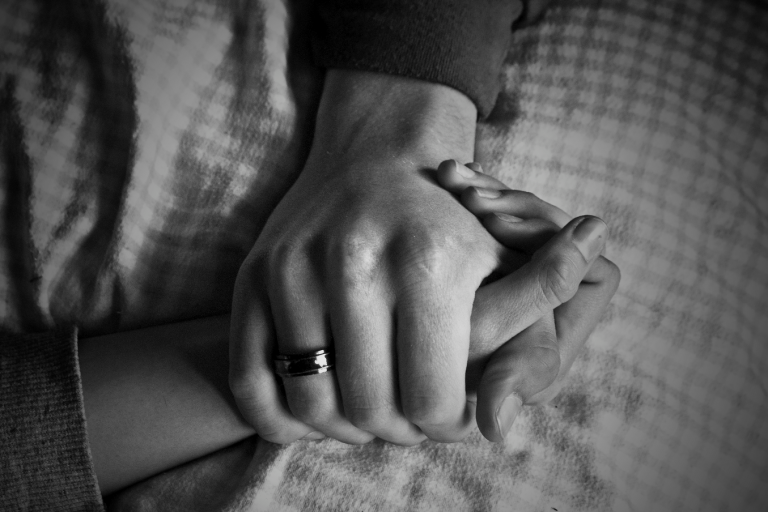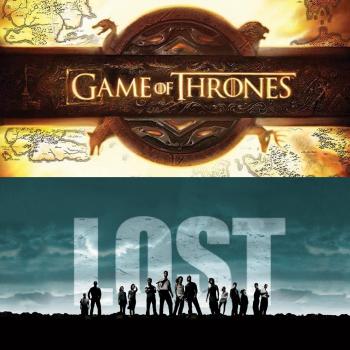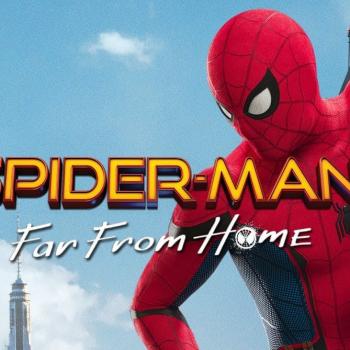
When I was 16, I sublocated my knee.
It was at an end of the summer dance at choir camp. The twist came on, and I twisted one way, while my right knee twisted the other.
Before I knew it, I was on the floor, staring up at a very unfamiliar, and extremely handsome young man, who was gaping down at me.
“Do you need help?” he managed to squeak.
I blushed, feeling rather stupid in front of this gorgeous fellow, and was about to protest that I was fine. But my hand, being wiser than my mind, moved down to the hurt. I can still remember the feel of my patella under my skin; where it had slipped to the outside of the knee.
Immediately I knew that if I got used to this level of pain, got used to the feel of my kneecap out of place, that once I got to the hospital and they put the patella back where it belonged, the pain would be even worse. So, I reasoned, since I was already in excruciating agony, what was a little more pain to get the kneecap back in place?
My hand moved on my patella. I shoved it back onto my knee.
Then, looking up at the bug eyed teen, I said: “Yes. Yes, I need some help.”
The Problem of Pain
Lately, I’ve been dealing through therapy with some childhood traumas that I’ve received. And boy. Has the healing been way worse than the comfortable numbness I lived with for the past 40 years. Ignorance, they say, is bliss. Or, if not bliss – then ignorance is very good at making the pain you’re in seem positively normal. Lovely. Desirable. “Good.”
As our world is still dealing with the fall out of #MeToo – and I count the resurgence of the Church’s priestly problems with sex as part of that – some of the outrage or protestations we’ve seen from good people defending abusers is exactly the same issue as the problem with my knee:
It is easy to remain ignorant. And to think the world is blissful.
It’s horrible to heal. And to put the bones in place.
Those who’ve lived with trauma, and collectively as a Church, or individually as people, there’s no one who hasn’t experienced some trauma in their lives – for those who’ve lived through trauma there are two responses: to face the pain and do the hard work of healing, or to remain comfortably numb and let the pain destroy you.
And make no mistake: to heal will hurt.
It will cost you peace of mind. It will cost you sleep. It will cost you time as you recover. It will cost you money as you heal. It will cost you – in the short term – prestige, position, power. It may cost you your left eye, your right arm, your parish priest, your uncle, your good name, your identity, the comfortable lies you spun yourself. It may even cost your sanity, which was never sane to begin with: it will cost you your “sanity,” which God has called “sleepwalking.” To heal will wake you up.
The Pain You Know
Two years ago, a dear friend of mine sat me down on her couch – her couch from which I couldn’t rise because my ankles had swollen to such an extreme that I could barely stand anyway – and she gently but firmly told me that I had to look at whatever was happening to my body full on.
“But it might be cancer,” I whimpered.
“Then better to know and deal with it,” she reasoned, “than to let it eat you up inside, just so you can keep saying to yourself, ‘Oh, well. What could I do? There was no way to know.'”
Her words spurred me on to submit myself to a battery of tests – many of which were painful – just to rule out anything life-ending in my body. These tests spurred me on to get bariatric surgery. And recovery from the surgery led me to psycotherapy, where the true cause of those swelling ankles, and the lifelong obesity, and even my fear of looking my life in the face all stemmed from.
There have been many high points. Because to heal also means to know where you are healthy.
For example, it was a relief in that first battery of tests to learn that I wasn’t riddled through with cancer. That I wasn’t even diabetic. That most of my body was quite healthy – I was “just fat.”
Of course, that didn’t mean I could just stop there. I had to deal with the fat itself. Prepping for the surgery was…awful. The two days of starving right before surgery were crazy-making. The pain of movement post-surgery was overwhelming. But then again, to see the first 90 lbs. just slip off was truly exciting. The ability to fit into smaller clothes and see my body, my body, the body I was always supposed to have start to come into view – to feel like I was allowed to be seen at last, was so liberating that all the battery of tests and poking and prodding was well worth it.
But even so, rather like Theresa’s Interior Castle, or Lewis’ “Further in, and further up!” we can’t stop there. What happened to my mind that I hid myself in layers of fat? Why had I allowed myself to get almost to a place of physical immobility? What had happened that I’d purposely forgot or never had eyes to see? That’s the part of the process I’m in now. And like the battery of tests or the starvation or the agony of having my stomach cut into, this part is painful.
The pain is the healing.
The grieving for time lost, loves lost, limbs lost, is the healing.
The ability to feel, not just to cope, is the healing.
But it hurts like a mother.
The Cause of All Our Suffering
Why bring this up? Not just for those who may be in some process with their own surgeries, with their own therapies, but at this time, for those of us – both inside the Church and outside it – we are casting about for whether we need to heal, and if we need to heal, how we need to heal.
To those who deny there is a problem: you are wrong. And I hope something like a sublocated patella wakes you up to the suffering of others.
To those who say that more sex or less sex, or more marriage, or fewer gays, or all straights, or women priests, or no priests and no faith at all – or any form of knee-jerk solution: I beg you to take a breath before you offer more prescriptions.
You are right that we need to consider what the cause of our collective disease is. But it’s likely to be a bit more complex than your pet solution.
For example: I was fat. The problem, one might presume, was food. And my relationship to it. The body positivity movement might say: “Eat away! Don’t let anyone control you!” Whereas those who absolutely abhor anything resembling a curve might say: “Starve yourself! Fear ice cream! Don’t let food control you!”
Hence, when I went into therapy, I expected to learn that I had an eating disorder. Nope. I have two tubs of ice cream in my freezer right now. They’re going to take quite a while for me to get through. Whereas I am going to get all my protein in. Even in small portions. It isn’t food that’s my problem.
But I do have problems. They just manifested, for a while, as food.
The problems lay elsewhere.
Just like the solution to my swollen ankles lay in cutting away my stomach. Just as the regulation of my stomach, means now cutting through the fog that traumatized my brain.
It’s worth looking deeper.
The Hashtag Heard ‘Round the World
What is the cause of this weaponization of sex? Why are priests, comedians, studio executives, married men, “just good guys,” Aziz Ansari, uncles, that one guy on the street, your best friend’s brother, your boyfriend, our president – all approved abusers? Who let them get away with this?
Part of it, I’m sad to say, is that we just let it happen. As my grandmother did nothing to stop my uncle. As the bishops did nothing to stop the priests. As I did nothing to stop someone else’s students.
It’s easier to say that the metaphorical kneecap is better out of place.
And if we learned, through the centuries, that all figurative patellas belong out of joint, how in the world can we know any better?
How can we know what our bodies are supposed to be like, if we have centuries of being out of joint?
How are we supposed to know what sex, or any relations, are supposed to look like, when we’ve been crippled for so long?
The importance of whistle-blowing, of the Boston Globe’s Spotlight report in 2002, of the current scandal from Pennsylvania, and especially of #MeToo is that we’re – at the very least – putting our hand on the allegorical patella. We’re acknowledging that we’re sitting on the floor, incapable of dancing. That we are, in fact, in pain. And slowly…very slowly…and with a certain amount of hesitation, we’re considering pushing that patella back where we think it belongs again.
Although we aren’t sure.
No one’s ever tried to have their kneecap on their knee before.
And healing hurts like Hell.
But I can tell you from experience, it’s better Catholic Church, it’s better victims of abuse, it’s better – you abusers – to put the hand on your patella and shove it back in place. That first spark of violence will be the easy part. Then comes the harder part of healing.
Coraggio.
 Image courtesy of Wikimedia Commons.
Image courtesy of Wikimedia Commons.
WE NEED YOUR SUPPORT! You can keep the Pop Feminist going to the tune of $1/month by becoming a patron on Patreon today!












